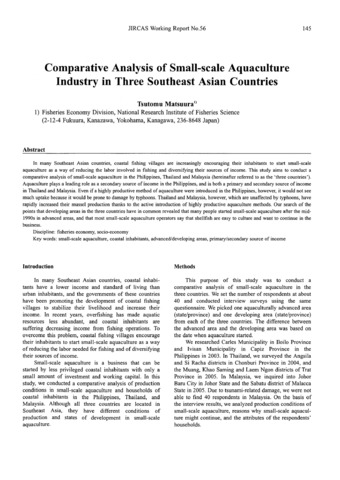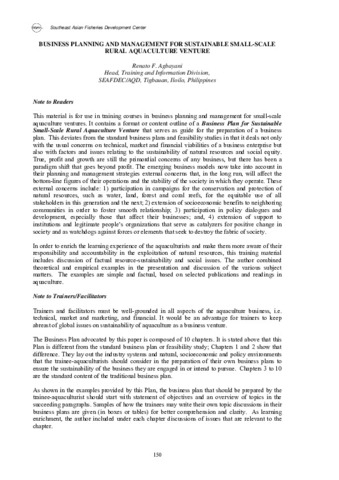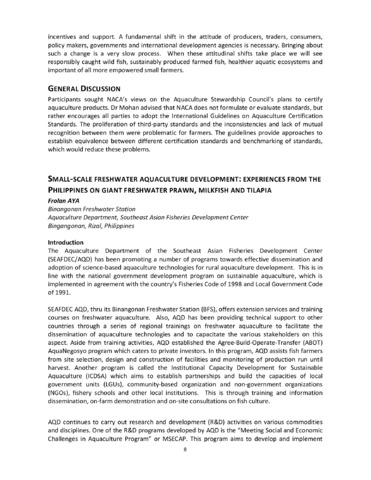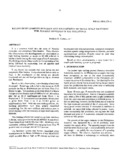Comparative analysis of small-scale aquaculture industry in three Southeast Asian countries
Share
Abstract
In many Southeast Asian countries, coastal fishing villages are increasingly encouraging their inhabitants to start small-scale aquaculture as a way of reducing the labor involved in fishing and diversifying their sources of income. This study aims to conduct a comparative analysis of small-scale aquaculture in the Philippines, Thailand and Malaysia (hereinafter referred to as the ‘three countries’). Aquaculture plays a leading role as a secondary source of income in the Philippines, and is both a primary and secondary source of income in Thailand and Malaysia. Even if a highly productive method of aquaculture were introduced in the Philippines, however, it would not see much uptake because it would be prone to damage by typhoons. Thailand and Malaysia, however, which are unaffected by typhoons, have rapidly increased their mussel production thanks to the active introduction of highly productive aquaculture methods. Our search of the points that developing areas in the three countries have in common revealed that many people started small-scale aquaculture after the mid-1990s in advanced areas, and that most small-scale aquaculture operators say that shellfish are easy to culture and want to continue in the business.
Keywords
small-scale aquaculture coastal inhabitants advanced/developing areas primary/secondary source of incomeSubject
Collections
Related items
Showing items related by title, author, creator and subject.
-
Business planning and management for sustainable small-scale rural aquaculture venture
Agbayani, Renato F. (Secretariat, Southeast Asian Fisheries Development Center, 2008)This material is for use in training courses in business planning and management for small-scale aquaculture ventures. It contains a format or content outline of a Business Plan for Sustainable Small-Scale Rural Aquaculture ... -
Small-scale freshwater aquaculture development: Experiences from the Philippines on giant freshwater prawn, milkfish and tilapia
Aya, Frolan (Japan International Cooperation Agency, 2013-12)The Aquaculture Department of the Southeast Asian Fisheries Development Center (SEAFDEC/AQD) has been promoting a number of programs towards effective dissemination and adoption of science-based aquaculture technologies ... -
Recent developments in design and management of small-scale hatchery for Penaeus monodon in the Philippines
Gabasa Jr., Porfirio G. (South China Sea Fisheries Development and Coordinating Programme, 1982)It is a common belief that the zoea of Penaeus monodon are completely filter feeders. Thus, diatoms like chaetoceros and phytoflagellates are maintained at high feeding densities as much as 80 000 cells/ml in hatchery tanks ...






